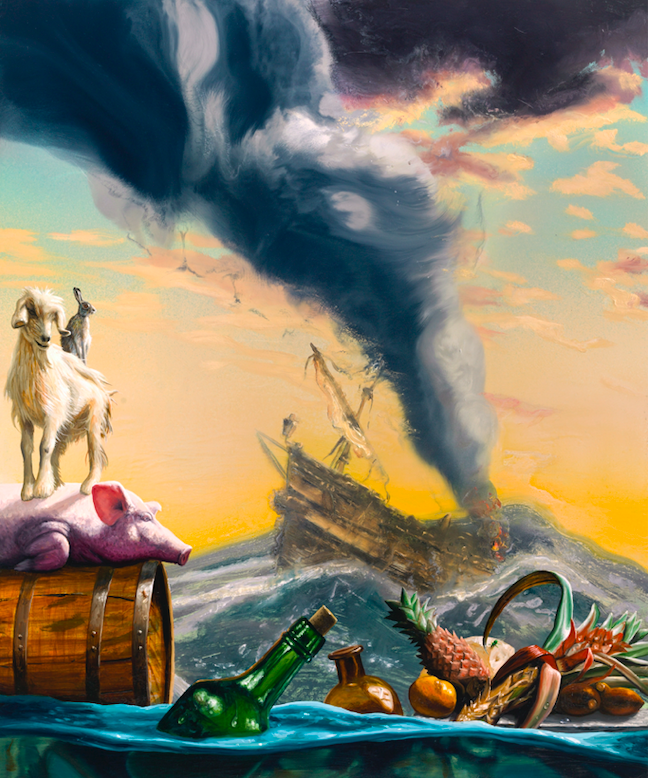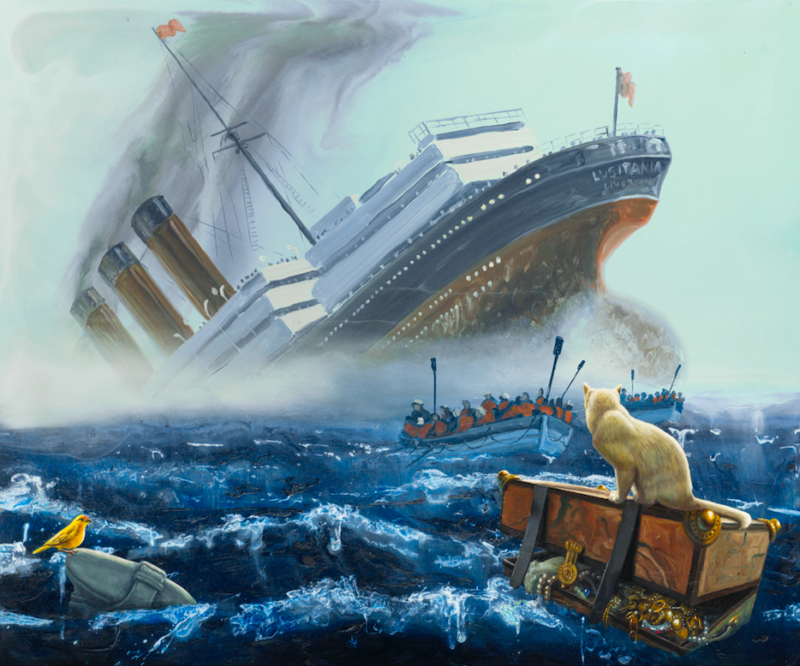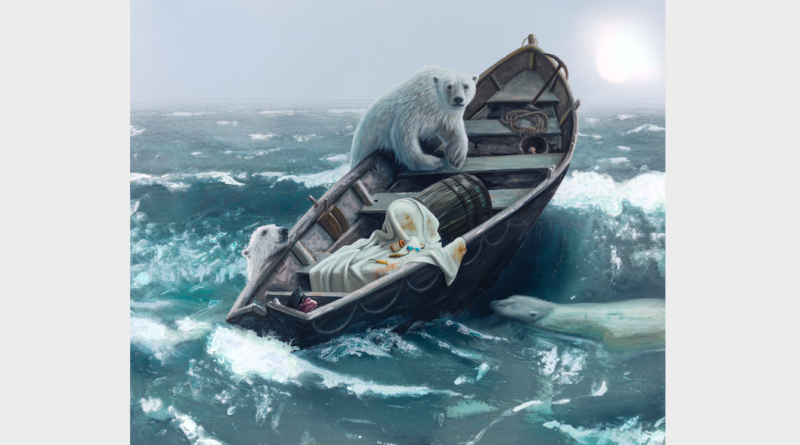INTERVIEW: Alexis Rockman on the ‘timely’ symbolism of shipwrecks
Image: Alexis Rockman. Born 1962. The Lifeboat of the HMS Erebus, 2019. Oil on wood. 40 x 48 in. Courtesy of Baldwin Gallery, Aspen, Colorado. Provided by Peabody Essex Museum with permission.
The Peabody Essex Museum stands in a central location along the famed Essex Street in Salem, Massachusetts. The artistic institution, which has a unique and varied history, is a bedrock of the arts scene in this seaside town, and it’s only fitting that much of its collection and curating energy is centered around Salem’s historical role as a port of call.
As one meanders through the rooms and corridors of the museum, this maritime history is evident. For example, one distinctive room is the East India Marine Hall, a building that attaches to the main museum complex and is an historical reminder of the East India Marine Society, which dates back to the 18th century.
Until May 31, attendees to the Peabody Essex Museum, and specifically the East India Marine Hall, will have a chance to appreciate this history in a novel way. Hanging on the wall are 10 striking paintings by Alexis Rockman, a contemporary American painter. His exhibition is called Shipwrecks, and it depicts the overworld and underworld of various shipwrecks throughout history. They are surreal, large-scale works that offer simultaneous reflection on history, the present and the future.
For example, for the “Lusitania” painting, there’s an animal with its back turned to the viewer. It’s hanging on to a chest full of jewelry and watching as the mighty ship sinks in the background. Similarly, “The Lifeboat of the HMS Erebus” calls to mind some of the iconic images of warming seas: Two polar bears attempt to board the lifeboat — one of the bruins looking, quite deeply, at the viewer, almost in a plea of embarrassing help. Large octopi and sea birds dominate the rest of the colorful landscapes.
“Over the 35 years of my career, I couldn’t help but stumble on a shipwreck or two that would be of interest,” Rockman said in a recent phone interview. “Historically my wife and I went to Antarctica, and we saw a ship sinking crossing the Drake Passage. We saw several sunken ships that had been around the Antarctic peninsula on that trip and various other incidents over the years.”
Those experiences stayed with Rockman, and then almost a decade ago, he started working on a project about Alfred Russel Wallace, the British naturalist who was a generation younger than Charles Darwin and billed as a co-discoverer of natural selection.
“He was a self-made man, had been in Brazil in his 20s collecting specimens for the taxidermy trade to make a living, and on his way back the ship he was on, the brig Helen, caught flame and sank,” Rockman said. “He lost four years of work, so when I made the painting about that and imagined his perspective watching his collection not only float on the surface of the Atlantic but go to the bottom of the ocean, it took me a couple of months for it to sink in. And I was talking to one of my dealers in Aspen, Richard Edwards, and my wife after that show opened, and we all agreed that a project about shipwrecks might be timely and interesting. And that was in 2017.”
When Rockman set out to paint the 10 pieces for the current exhibition, he had a natural checklist of which shipwrecks to highlight. Obviously, consideration has to be given to the Lusitania and Titanic, two ships he called “central casting” for any project about maritime history. However, he also wanted to expand his perspective and include shipwrecks from other cultures.
“To be clear, I’m not an expert in the history of shipwrecks, and also it could be a lifelong project,” he said. “It’s the tip of the iceberg, no pun intended.”
Visitors to the Peabody Essex will likely pick up on the environmental messages of Rockman’s paintings, including climate change. It’s impossible not to see these wrecks and stranded animals as a symbol for warming temperatures. The artist finds it interesting that this theme is coming through at the Salem museum because his other works are much explicit on this front.
“I spent many years making paintings about climate change, which I started over 25 years ago, so for me this is the most subtle and almost elliptical reference to climate change,” Rockman said. “But I can’t help it. It’s been on my mind for so long, and it is the crisis of our generation and the previous generation. … I can’t sit aside and just watch the world go up in flames or get flooded, so to speak, without trying to do something about it.”
Alexis Rockman: Shipwrecks is organized by Guild Hall in East Hampton, New York. The exhibition is expected to move from the Peabody Essex at the end of May and open at Guild Hall June 12, with a run through July 26.
“I started the project with Andrea Grover once I decided I wanted to do a project about shipwrecks,” Rockman said. “She’s the director of Guild Hall in East Hampton, and she asked me what I was working on. I said, ‘Shipwrecks.'”
He told her that he needed three years to complete the exhibition, and Grover put him in touch with the Peabody Essex, a museum he had never visited before. He was intrigued by the Salem institution because they have a maritime curator and contemporary art curator.
“So we drove up and met with them, and they’ve been nothing but fantastic, incredibly supportive,” the painter said. “To get any project at this point to happen, let alone institutionally, it takes a collective will and people who really want to do it. It’s such a struggle to get anything done at this point because of COVID. The fact that the project happened, I’m so grateful.”
By John Soltes / Publisher / John@HollywoodSoapbox.com
Alexis Rockman: Shipwrecks runs through May 31 at the Peabody Essex Museum in Salem, Massachusetts. It will then open at Guild Hall in East Hampton, New York, June 12, running through July 26. Click here for more information.



